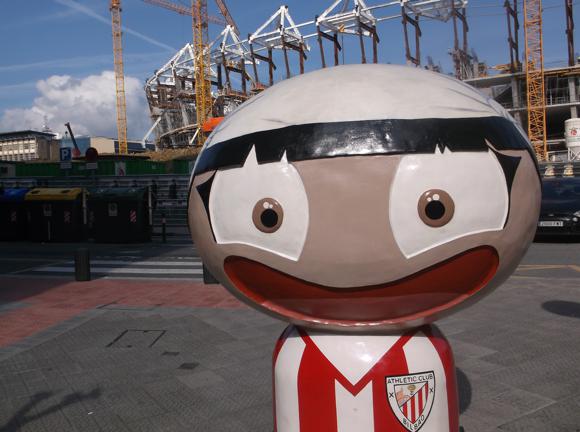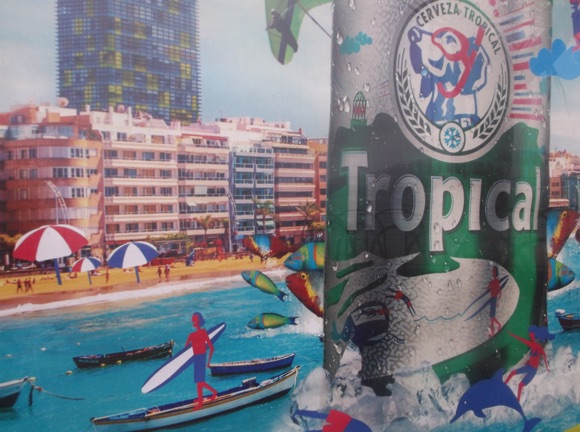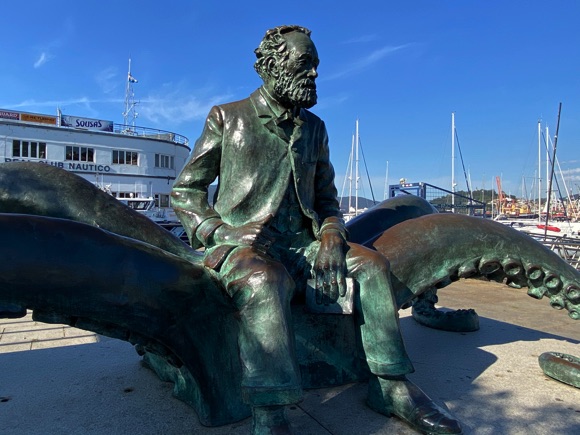Teams, tales and tips – a guide to the local game
These are exciting times in Bilbao. Despite not being able to co-host Euro 2020, Spain’s most venerable stadium and home of one of its most decorated clubs, the San Mamés, has been awarded the Women’s Champions League final in 2024 and the Europa League final the following year. Then comes the 2030 World Cup, for which Bilbao will surely be a venue city, reprising the role it played back in 1982.
Rebuilt and partially reopened in September 2013, a century after the original stadium was unveiled on the same site exactly a century before, the new arena first filled to full capacity in 2014 for the return of Champions League football to Bilbao after 16 years.
Bilbao’s flagship club Athletic duly qualified for Europe four seasons running, then twice missed out as cup runners-up. Los Leones can usually be found in the upper half of the league table while still sticking firmly to their policy of fielding Basque-only players – one that their regional rivals, Real Sociedad of San Sebastián, abandoned in the 1980s. Moreover, while once high-achieving clubs buckle under huge debts – Barcelona, Valencia, Málaga – Bilbao seem to thrive.
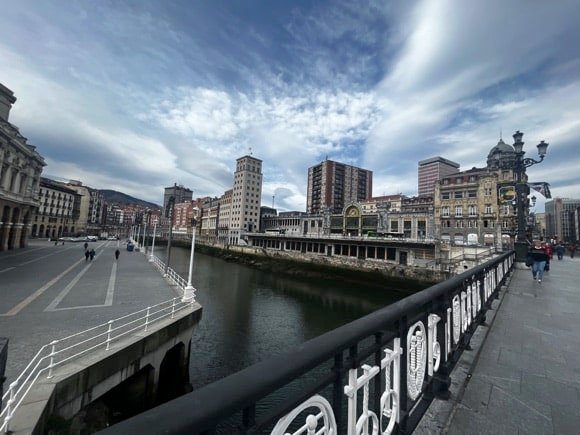
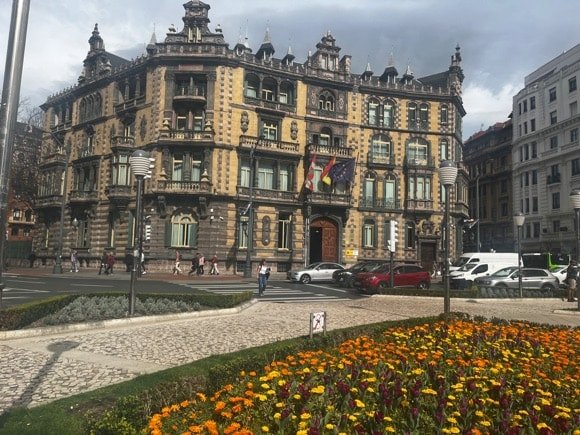

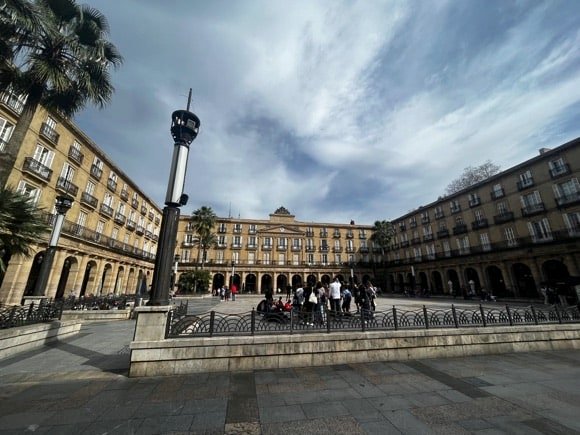
With their new stadium preparing for those showcase events, Athletic are pouring money into Lezama, the training centre east of Bilbao where the next generation of players is being nurtured.
A packed house at the old San Mamés bade farewell to Spain’s most revered football ground, aka ‘The Cathedral’, in June 2013. Great Athletic players past and present stepped onto the hallowed turf, originally shipped all the way from England, before an exhibition match between Bilbao and a Basque XI.
A century of football history in Bilbao had come full circle. In fact, it was in the 1880s and 1890s that British miners, foundry and shipyard workers, from the south coast and the north-east, began playing football around this industrious northern port. The first organised match, between an expat team and ‘Bilbao FC’, essentially expats as well, took place in 1894.


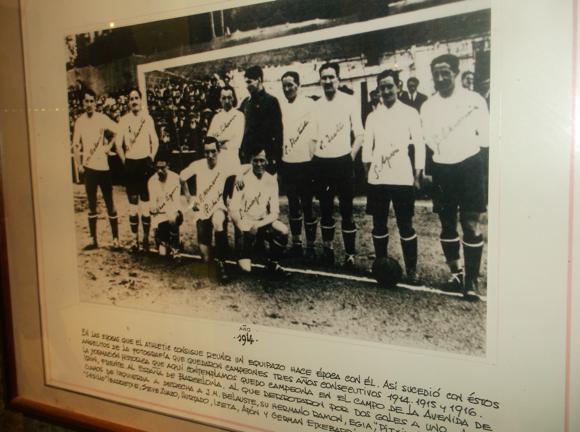
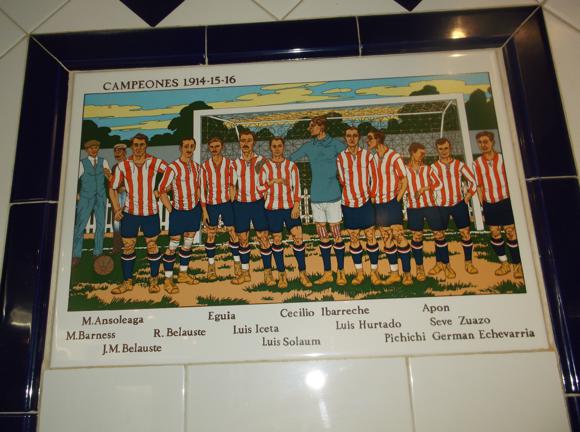
Although a match had taken place before then, in Seville, also with mainly expat workers, Bilbao is considered the cradle of the Spanish game. Young well-to-do locals, educated in England, picked up on the game, including Juan Astorquía, who in 1898 helped found what would become Athletic Club Bilbao. Though there remains no documentation of this historic deed, 1898 is the date Athletic fans stick by.
What we do know is that students of the Zamacois School and players from Bilbao FC convened at the Café García on February 5, 1901. On the agenda was the official formation of a local football club, put to paper exactly seven months later at the same venue. Located at Gran Vía 22, the café was taken over by a bank in 1918.
Until then, it was a popular meeting place for the local football fraternity. Here they would discuss matters such as the shirts Bilbao would wear – initially the blue-and-checked quarters of Blackburn, then the red-and-white stripes of Sunderland or, more likely, Southampton. A composite side of Bilbao FC and Athletic, Club Vizcaya, won the inaugural Copa de la Coronacíon, forerunner of the Copa del Rey, in 1902.
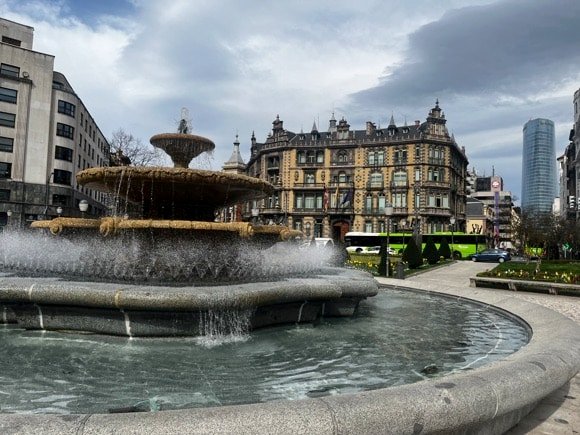

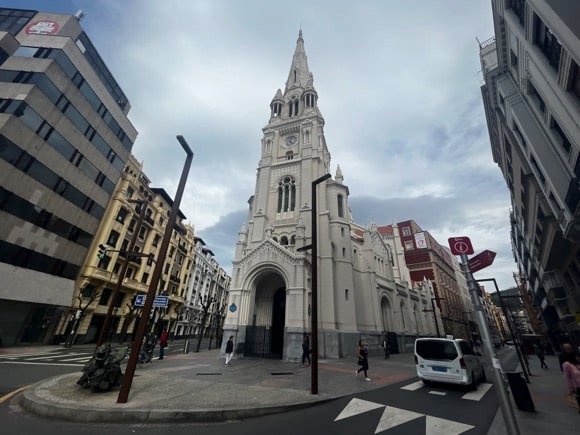
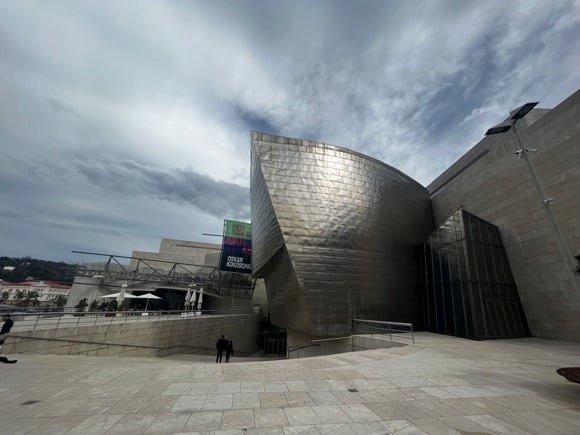
A year later, it was Athletic Bilbao, having swallowed up Bilbao FC, who set a long tradition of being cup specialists. Another tradition was fielding Basque-only players, one kept to now for over a century. While Real Madrid spend millions of euros on Bales and Ronaldos, Bilbao prefer to raise their own.
Never relegated, Los Leones have won the league eight times. English managers, starting with a ‘Mr Shepherd’ in 1910, is another Bilbao tradition – thought there hasn’t been one since Howard Kendall in 1989. It was perhaps no coincidence that England played their group games here in the 1982 World Cup – kicking off with a goal in record time by Bryan Robson.
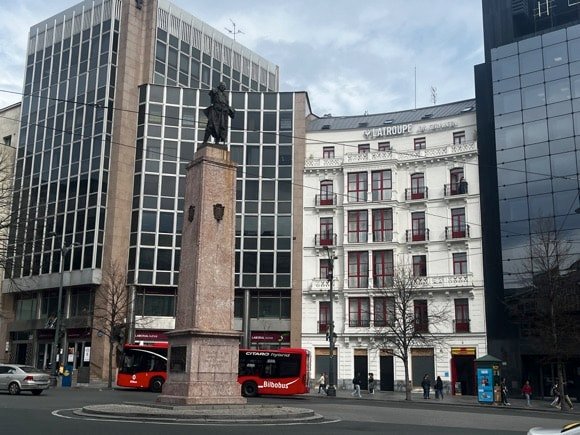
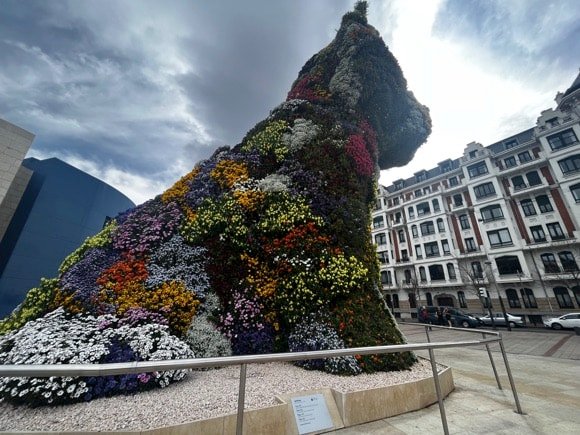
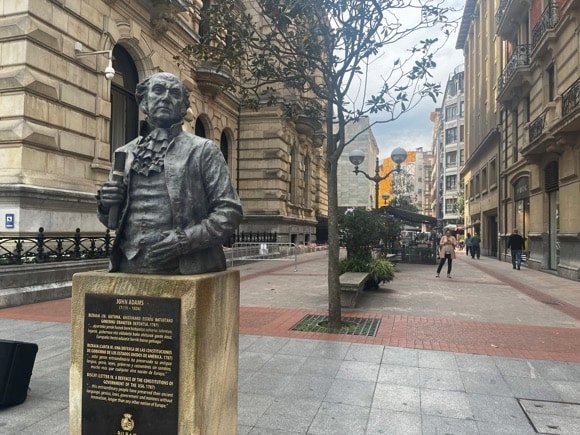
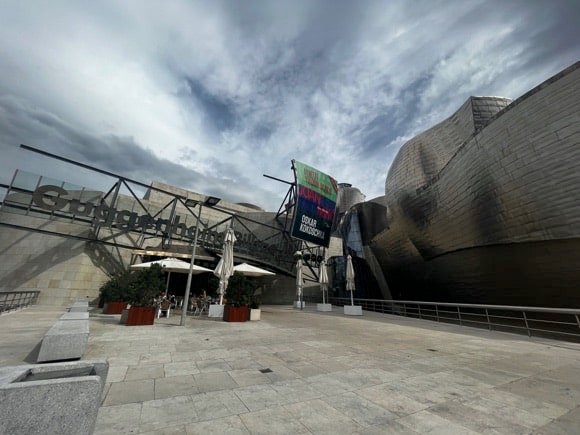
Ultimately, though, the San Mamés, built by Basque-born Manuel María Smith in 1913, personified the long, proud history of football in Bilbao. Comprising a grandiose wooden stand, a crescent of terracing and flower beds, not to mention a playing field of English turf, the San Mamés was light years ahead of the roped-off park pitches used elsewhere in Spain at the time.
At the inaugural match, against fellow Basques Real Unión de Irún, the first goal was scored by Bilbao’s Rafael Moreno, aka Pichichi. The striker was equally revered for his bravery, having died young fighting off typhoid. To this day, the top scorer in the Spanish league is called the Pichichi – dictated by a tradition established in Bilbao.
Getting Around
Arriving in town, local transport and timings

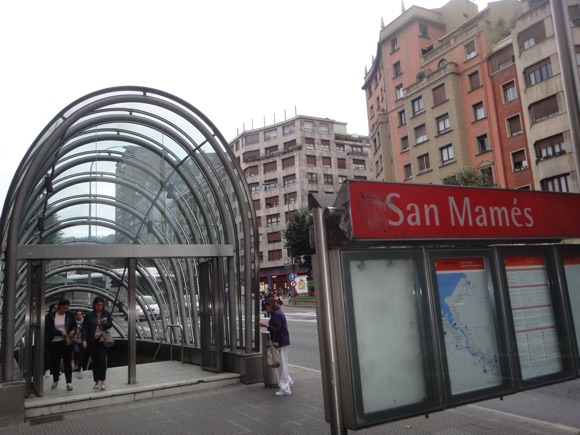
Bilbao Airport is 14km (nine miles) north of town, connected by Bizkaibus line 3247 (€3) that runs every 15mins (every 20mins early morning/eve) to the city’s main transport hub, Intermodal, right next to San Mamés stadium. Journey time is 40mins. A taxi (+34 944 800 909) to town should cost about €25-€30.
Intermodal is not only the city’s main bus station, but also connects with Bilbao’s metro and tram network, plus local trains, run by Euskotren like the single tram line. Metro and trams call at San Mamés and the main train station of Abando, used by national rail company Renfe. Basque Euskotren trains use the station in the Old Town, Zazpikaleak/Casco Viejo, also served by two of the three metro lines.
A single ticket on the metro is €1.70 for central zone 1, covering San Mamés, Abando, the Old Town and main stops in town. You can also buy a Barik card (€3 plus €5 minimum charge) at many stops, stations, kiosks and newsstands – including in the ticket office at Arrivals in the airport – that reduces fares to around a euro each, depending on the length of journey. This includes the airport bus, metro, tram, local trains and buses. Central Bilbao is quite compact and walkable, although the stadium and Old Town are at opposite ends of the city.
For a taxi in town, call +34 94 444 8888.
Where to Drink
The best pubs and bars for football fans
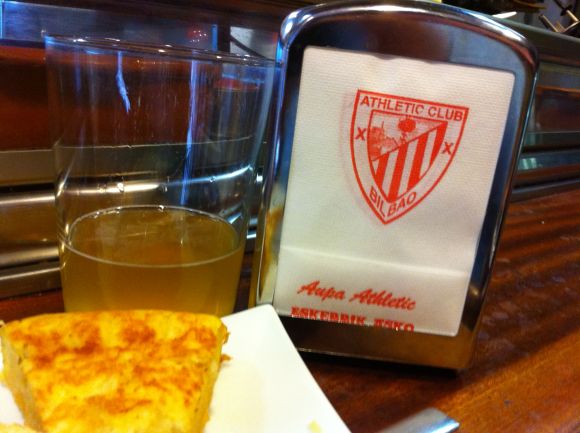




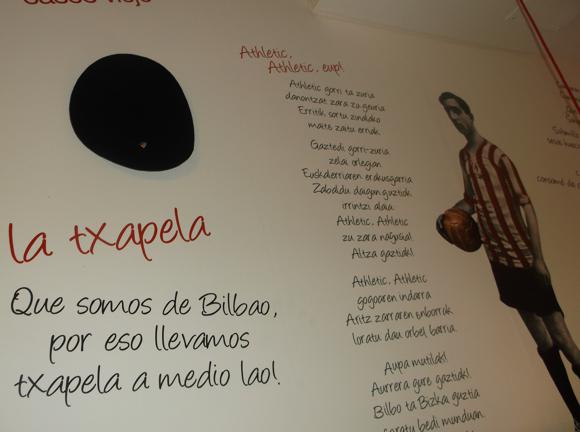
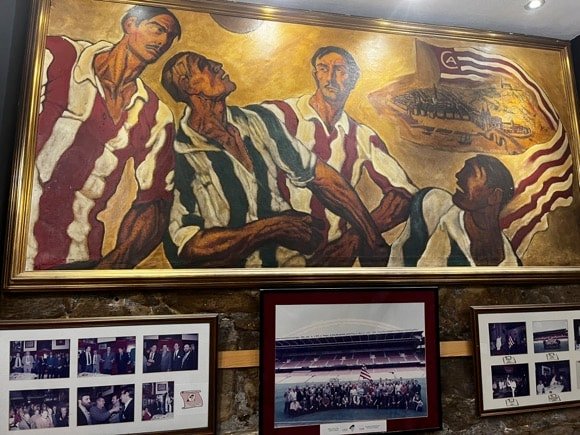
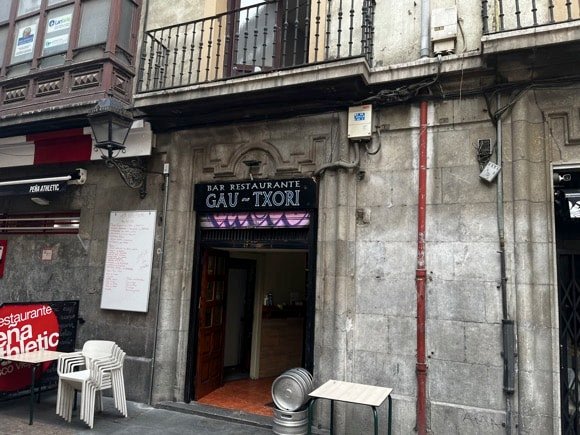
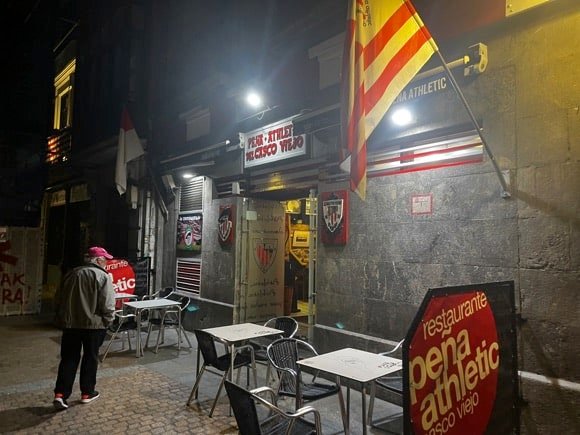
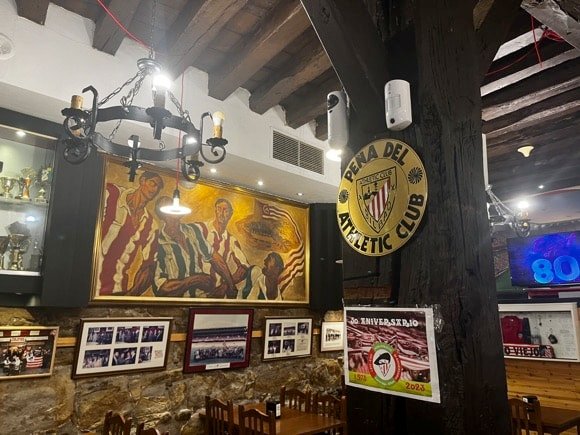
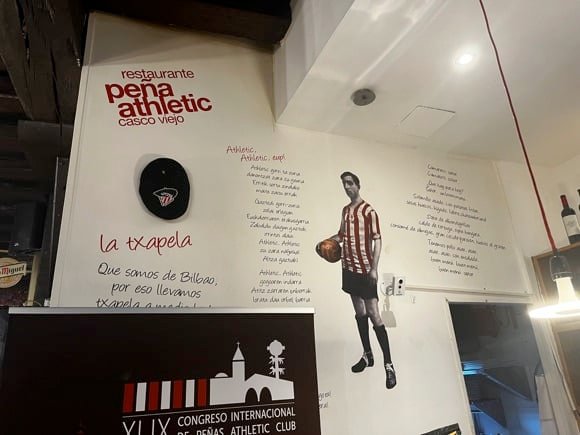
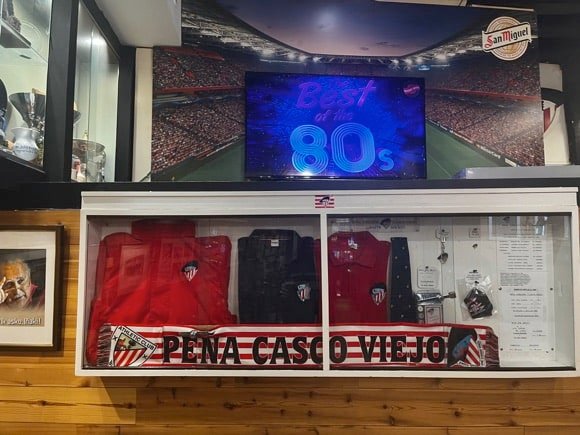
Bilbao’s old quarter, the Casco Viejo, is choc-full of bars, where beer (or cider) is served in round glasses. As the city is a gastronomic capital, the tapas here are superior. Athletic Bilbao peña bars also abound, meeting places for district supporters’ clubs, serving beer and open to all.
Typical of the genre is the Gau-Txori in Pelota Kalea in the Casco Viejo, next door to the Peña Athletic del Casco Viejo, the Old Town Supporters’ Club, recently and tastefully revamped into a stylishly themed restaurant with a bar counter.

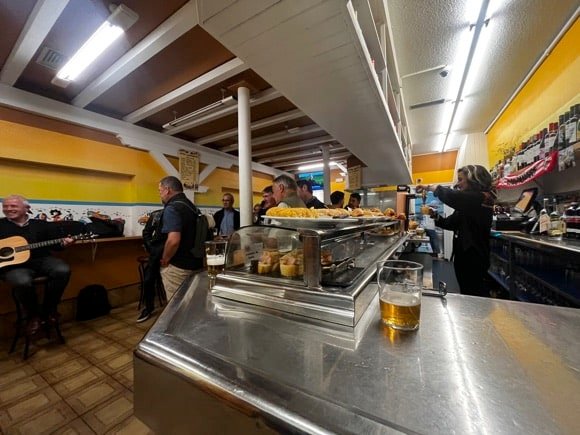
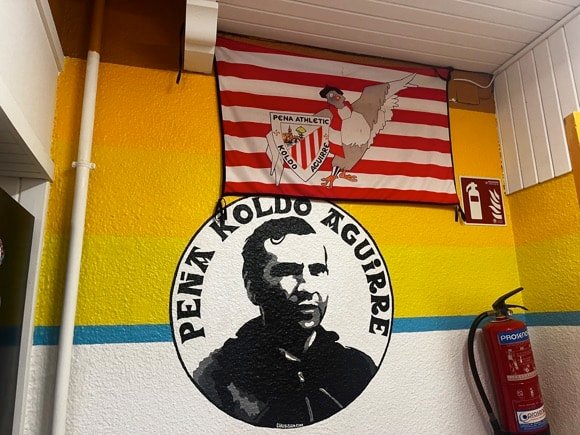

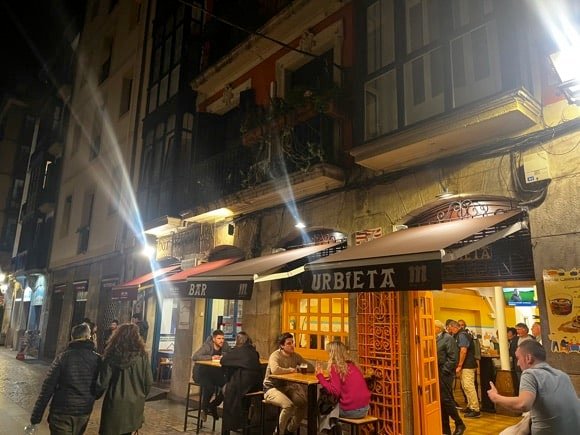

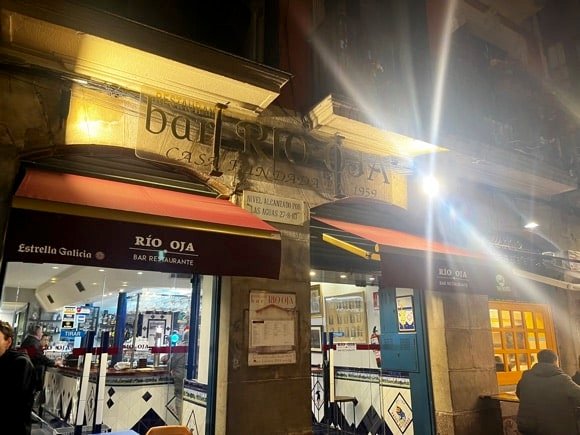

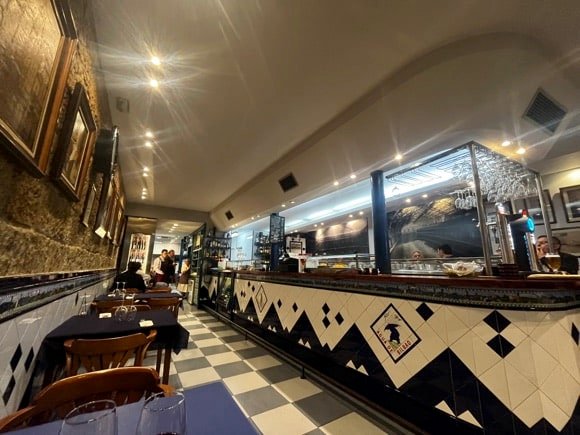

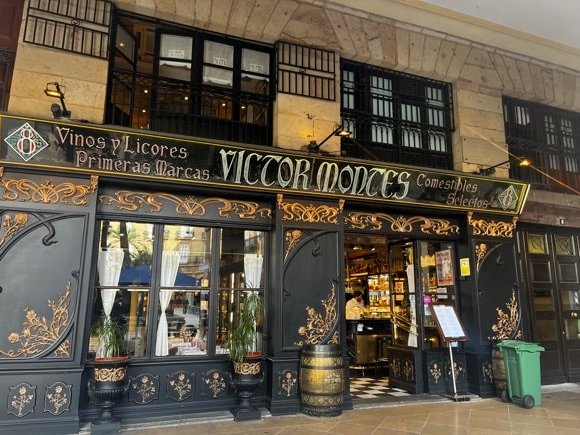

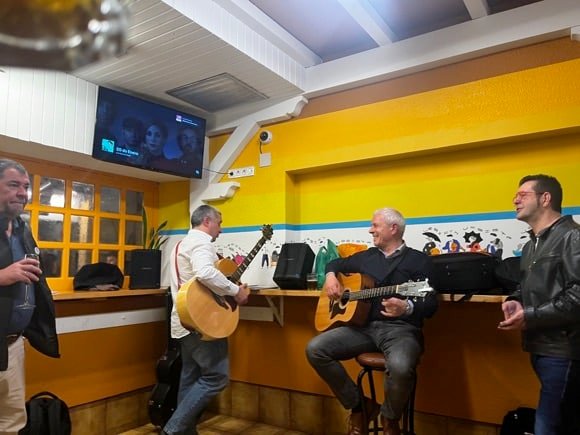
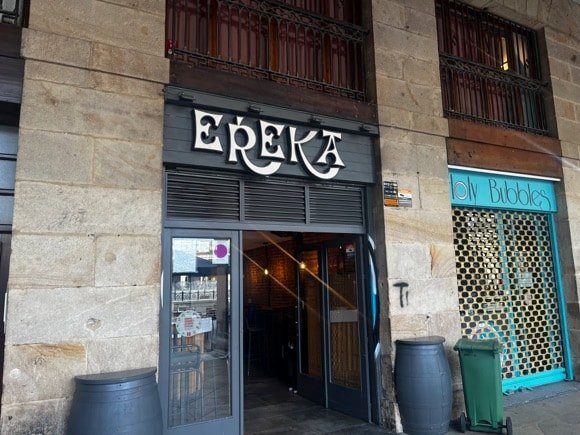

A short walk away, Restaurante Urbieta (Del Perro Kalea 5), in similar vein, is the seat of the Peña Koldo Aguirre. In the same street, Egiluz also displays framed Athletic history, as does Rio-Oja.
Even mainstream restaurants and tourist-friendly tapas bars, such as those on main Plaza Nueva at the entrance to the Casco Viejo – Café Bar Bilbao, Urdiña, Ereka, Victor Montes – are usually decked out in red and white.
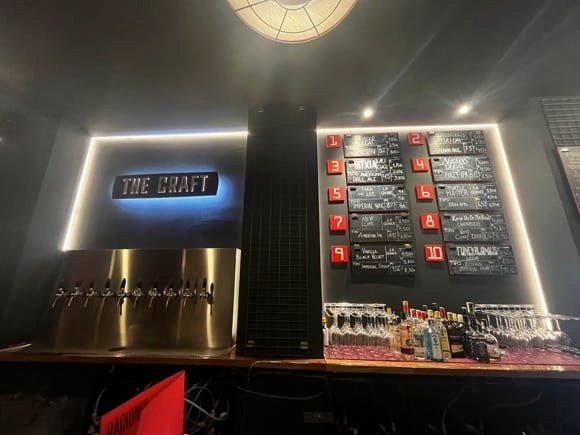
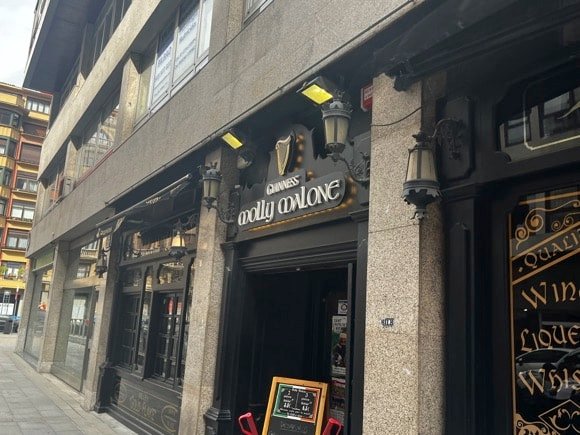
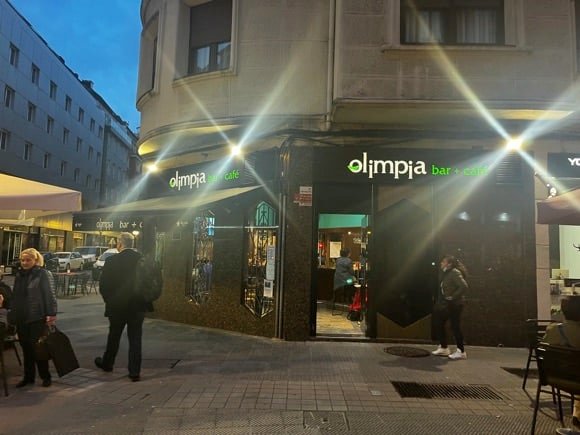
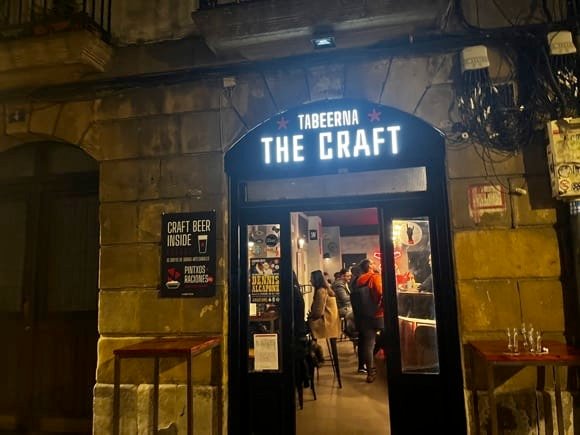
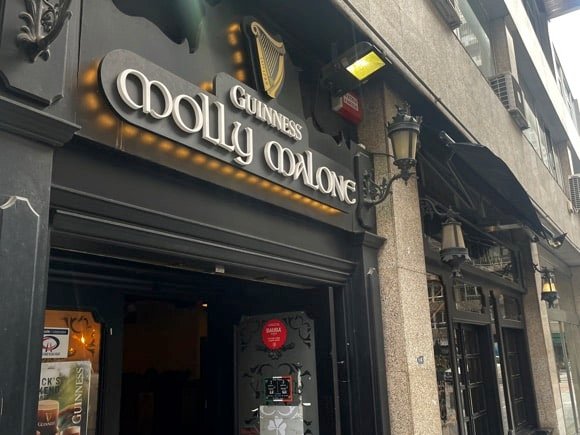
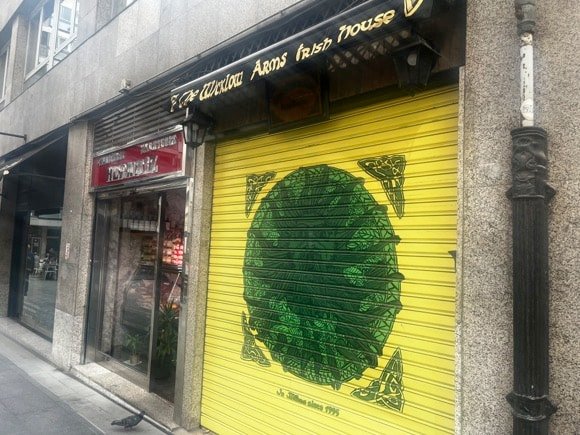
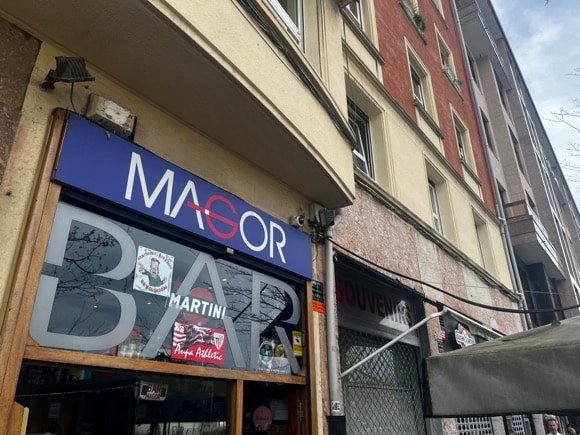
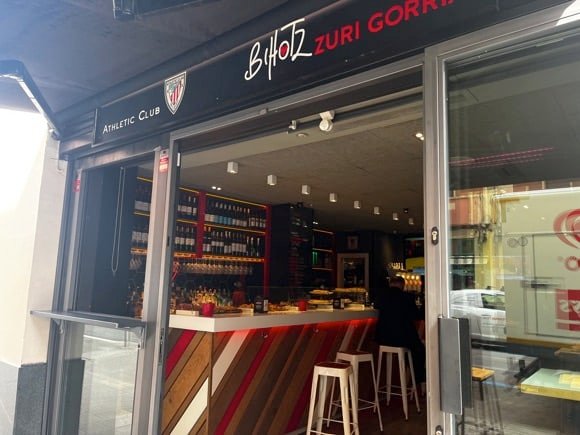
Bilbao can move with the times, too. Still in the Casco Viejo, towards the river, The Craft Tabeerna on Txakur Kalea represents a new type of venue in Bilbao, the focus on artisanal ales in a slightly industrial setting.
On a prominent corner in the city centre, near Indautxu metro, the Olimpia serves new-school tapas while showing sport over the bar counter. The other side of Indautxu, just off the Gran Vía, Molly Malone is Bilbao’s prime Irish pub, with flat screen for sport near the door, along with the nearby Wicklow Arms, in business for nearly 30 years, smaller but more football-focused.
Near Indautxu metro, on the road leading to the stadium, Bihotz Zuri-gorria is the Athletic Bilbao-themed branch of this craft-beer operation, with a sister outlet near the river behind Abando station. Not the cheapest place but if you’re happy to shell out a little extra for inventive pintxos and unusual brews, here’s the place. Finally, if you’re at the Guggenheim, the Bar Magor is a handy pitstop.
Where to stay
The best hotels for the stadium and city centre

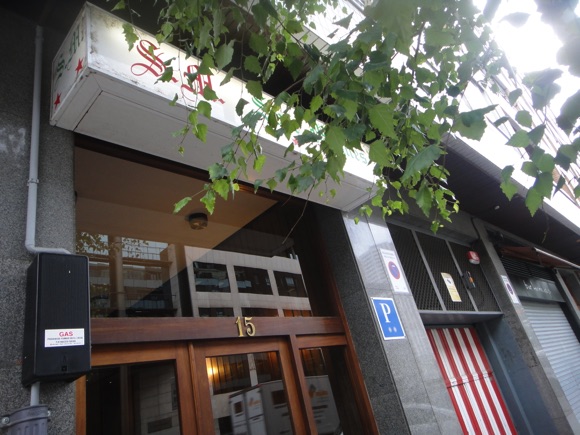
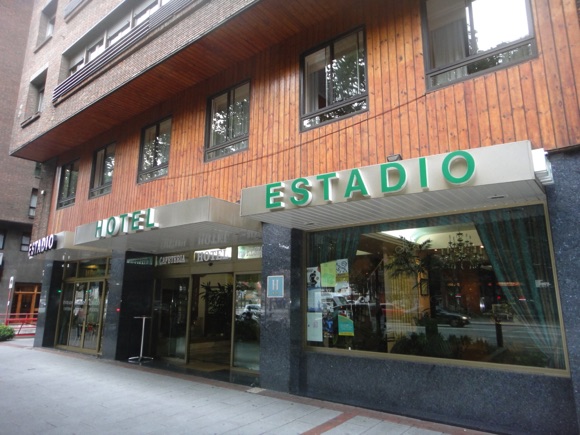
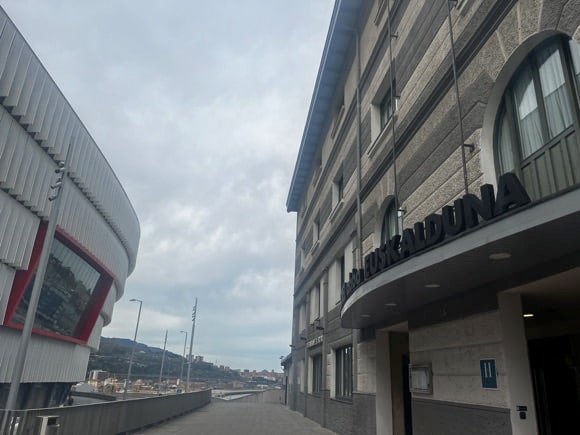
The Bilbao Tourist Office has a hotel database.
The stadium is surrounded by hotel options. Top business choice is the four-star abba Euskalduna, the former Hesperia Zubialde, whose El Botxo restaurant has a terrace overlooking the city and is currently offering prime Basque lunches at €22 on weekdays.
On the city side of the stadium, the once budget San Mamés was recently taken over and revamped by the Pillow group and now charges mid-range prices for contemporary furnishings and flat-screen TVs. The location remains outstanding, however, a few paces from the ground the hotel is named after and the various transport options alongside.
Still defiantly old-school, the Hotel Estadio alongside would have looked pretty retro even when it opened back in 1985. Its 18 rooms are still comfortable, its decor all sturdy wood and Athletic flags in the lobby. There’s a TV in the bar and you half-expect Howard Kendall to breeze through and get his round in.

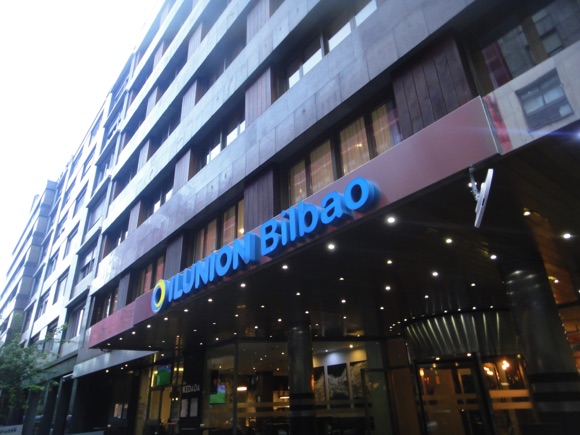



With former cheapie the San Mamés now gentrified, the main budget alternative is the Pil Pil Hostel almost next door. Don’t be put off by the ‘hostel’ bit – it also offers private rooms, with 24/7 entry, although it is shared bathrooms. For an overnight stay post-match, though, at this price you won’t find better, two minutes from the San Mamés.
With the Guggenheim and Fine Arts Museums also relatively close there are several better-quality chain hotels towards the waterfront on the city side. The nearest to the stadium is the reliable four-star NH Collection Villa de Bilbao, with 142 rooms, a rooftop gym and Basque restaurant.
Close by, the Hotel ILUNION is a great mid-range choice, Basque pintxos attractively arranged on the bar counter and online offers with direct booking. Neither hotel can be more than five minutes’ walk from the stadium.
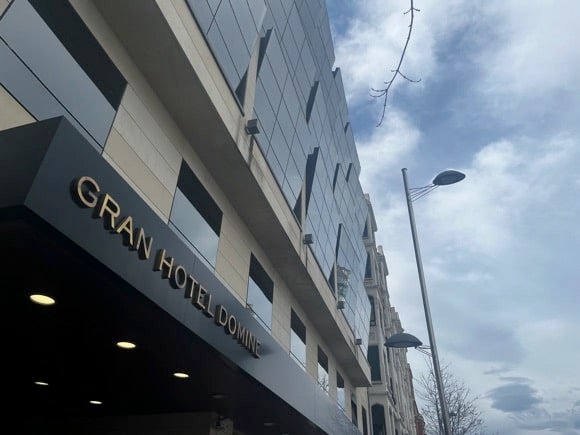
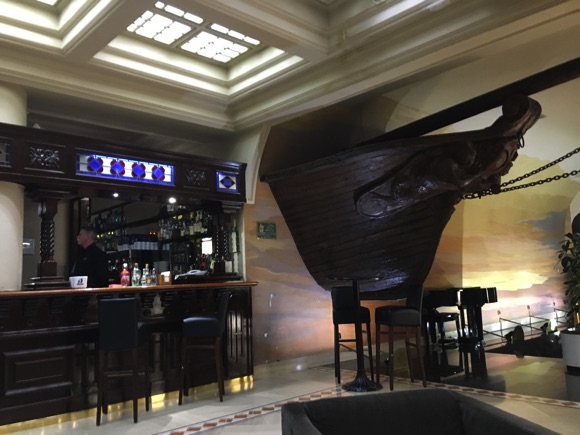
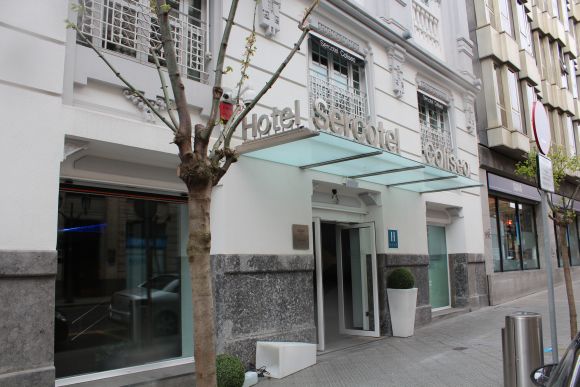
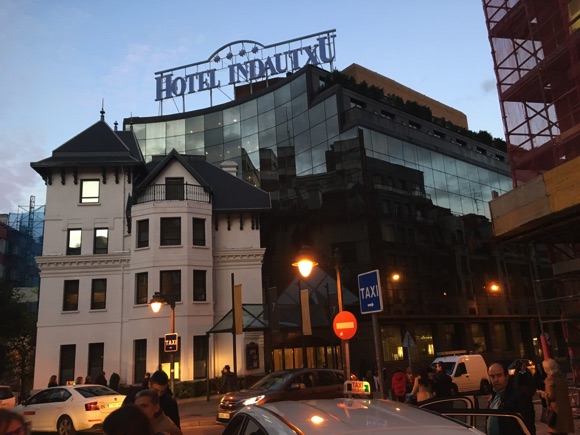
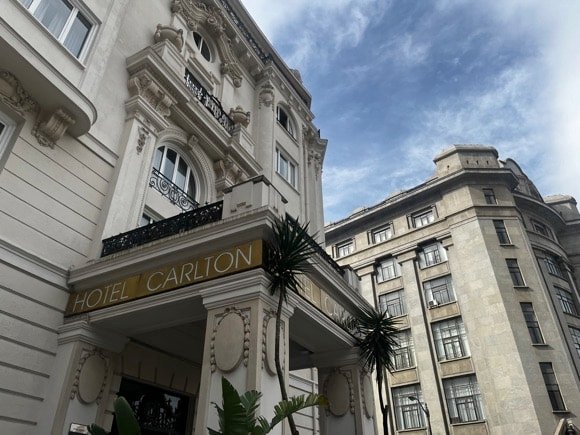


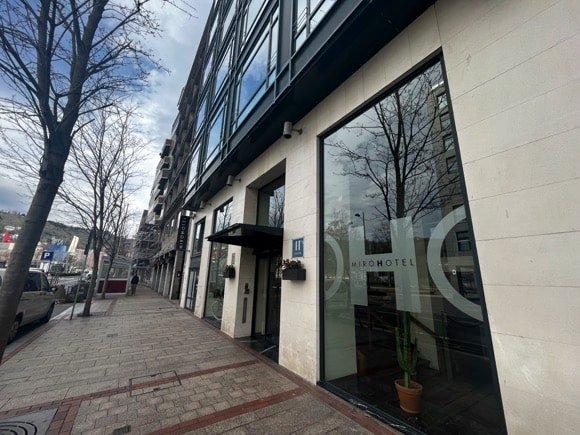
Handy for the Guggenheim but an easy walk from the stadium, the Hotel Miró is unsurprisingly arty, with a whole library of coffee-table books to peruse, and a modest gym and sauna. Nearby, the upscale Grand Hotel Domine offers prime views of the Guggenheim directly opposite, breakfast served on the roof terrace.
Near Indautxu metro station, the Silken Indautxu sets up a big screen for games in its El Muelle bar and lays on an impressive spread for breakfast. On prominent Plaza Moyúa, the five-star Carlton remains the same architectural landmark it was in 1926, when it opened.

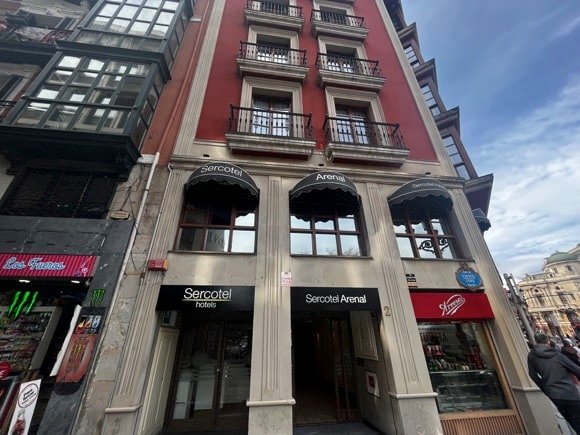

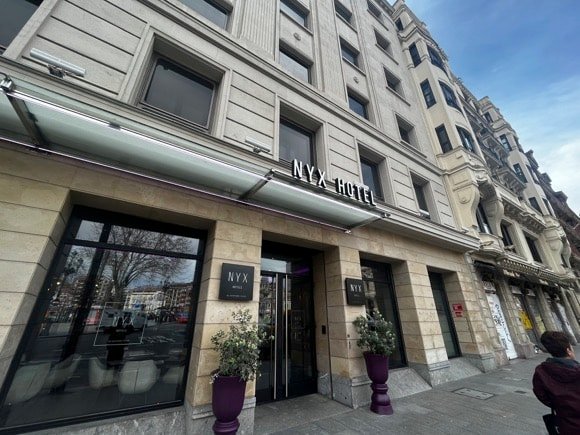



Convenient for Abando station, the elegant Sercotel Coliseo is the kind of hotel to offer a pillow menu and a casino. but also Sunday offers. Its counterpart across the river in the Old Town, the Sercotel Arenal, near Casco Viejo/Zazpikaleak metro station, is a mid-range three-star, with attractive offers when direct booked.
Alongside, the NYX Hotel Bilbao appeals to hipsters with its vintage arcade games in the lobby and sassy cocktails in its Clash bar. Right on the main square, the Pensión Plaza Nueva is old-school affordable.
For more original budget-friendly stay in the Old Town, the Basque Boutique on Dorre Kalea can’t be beat, not sacrificing comfort for a quirky design.


